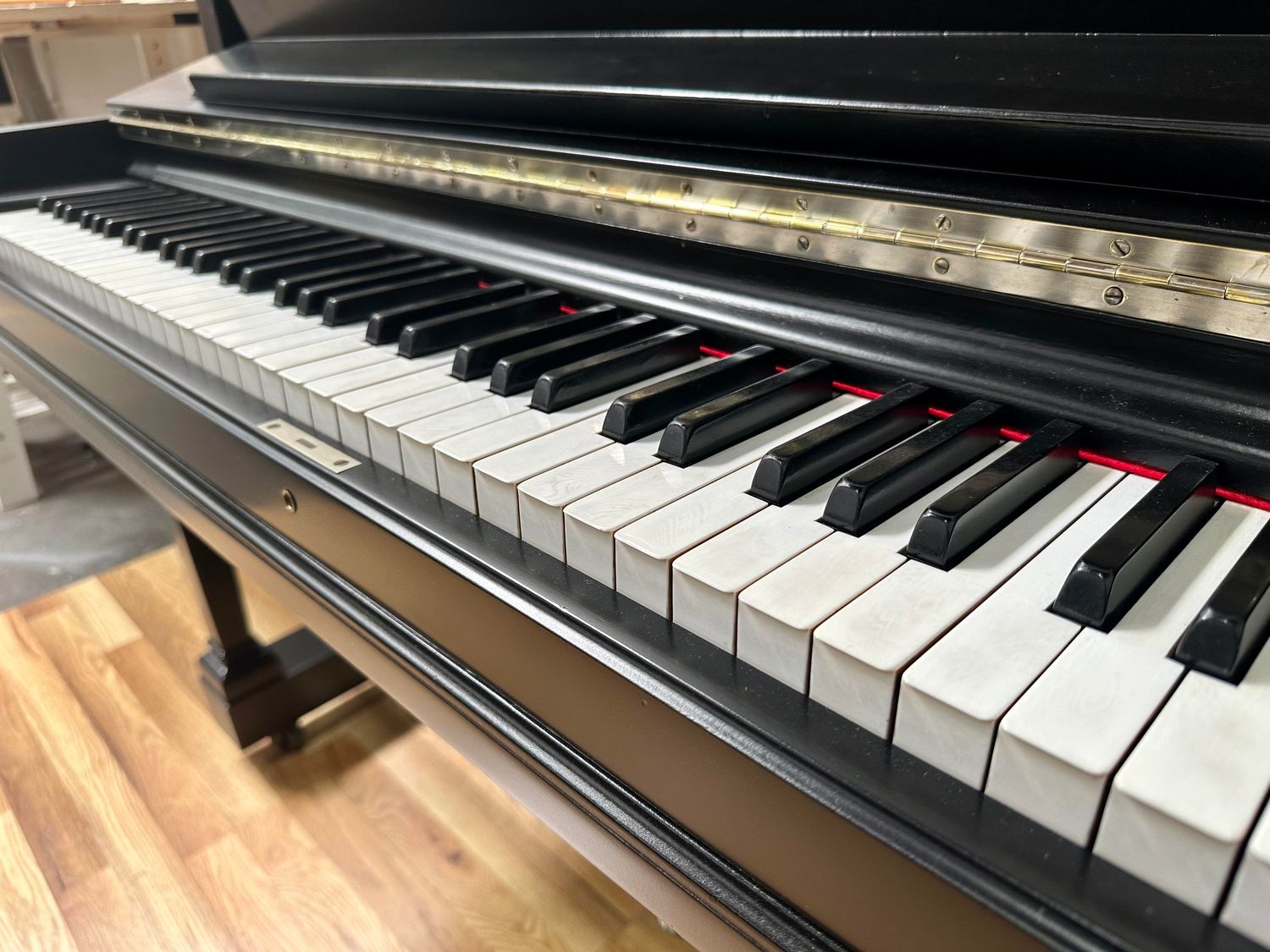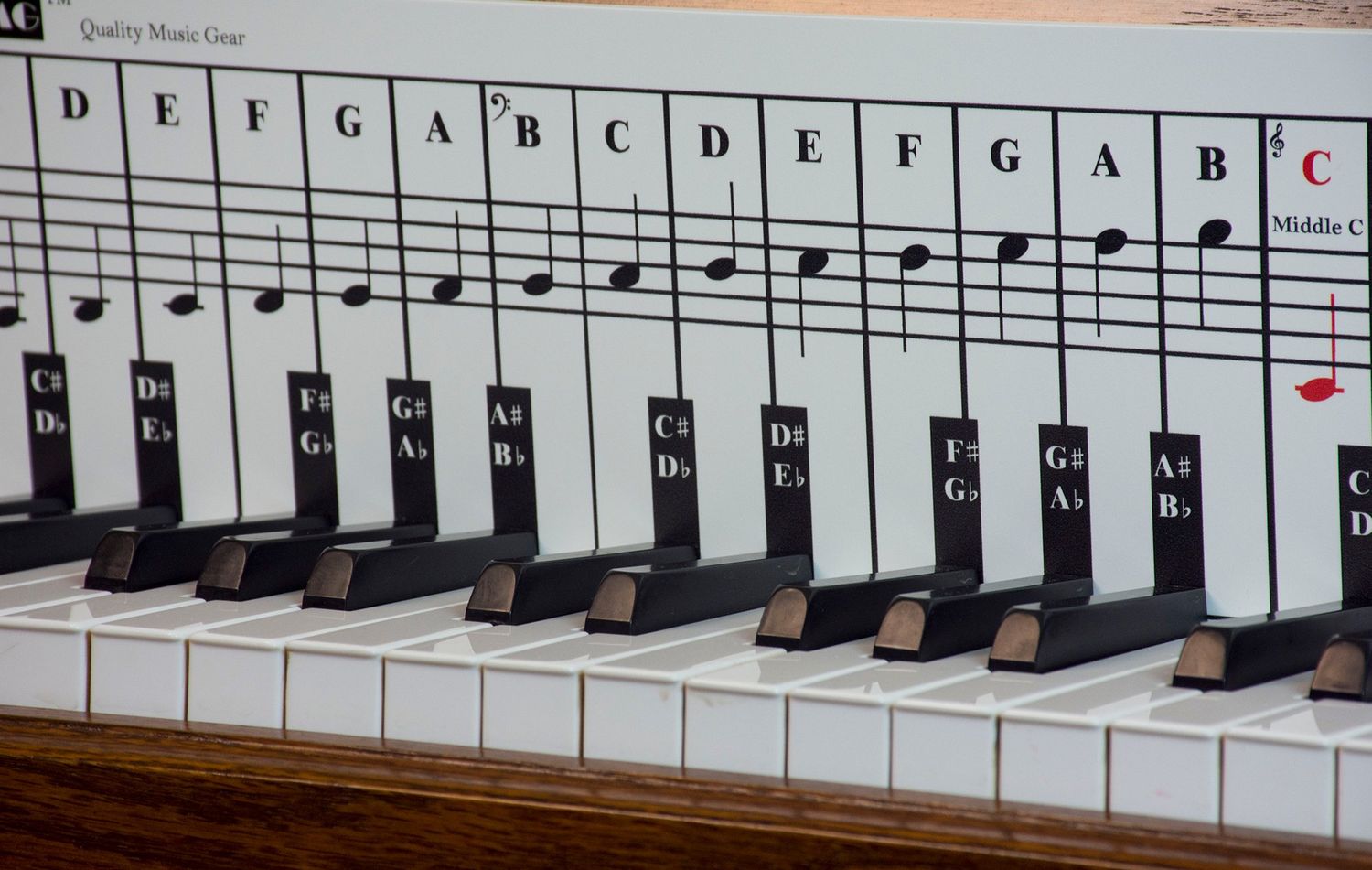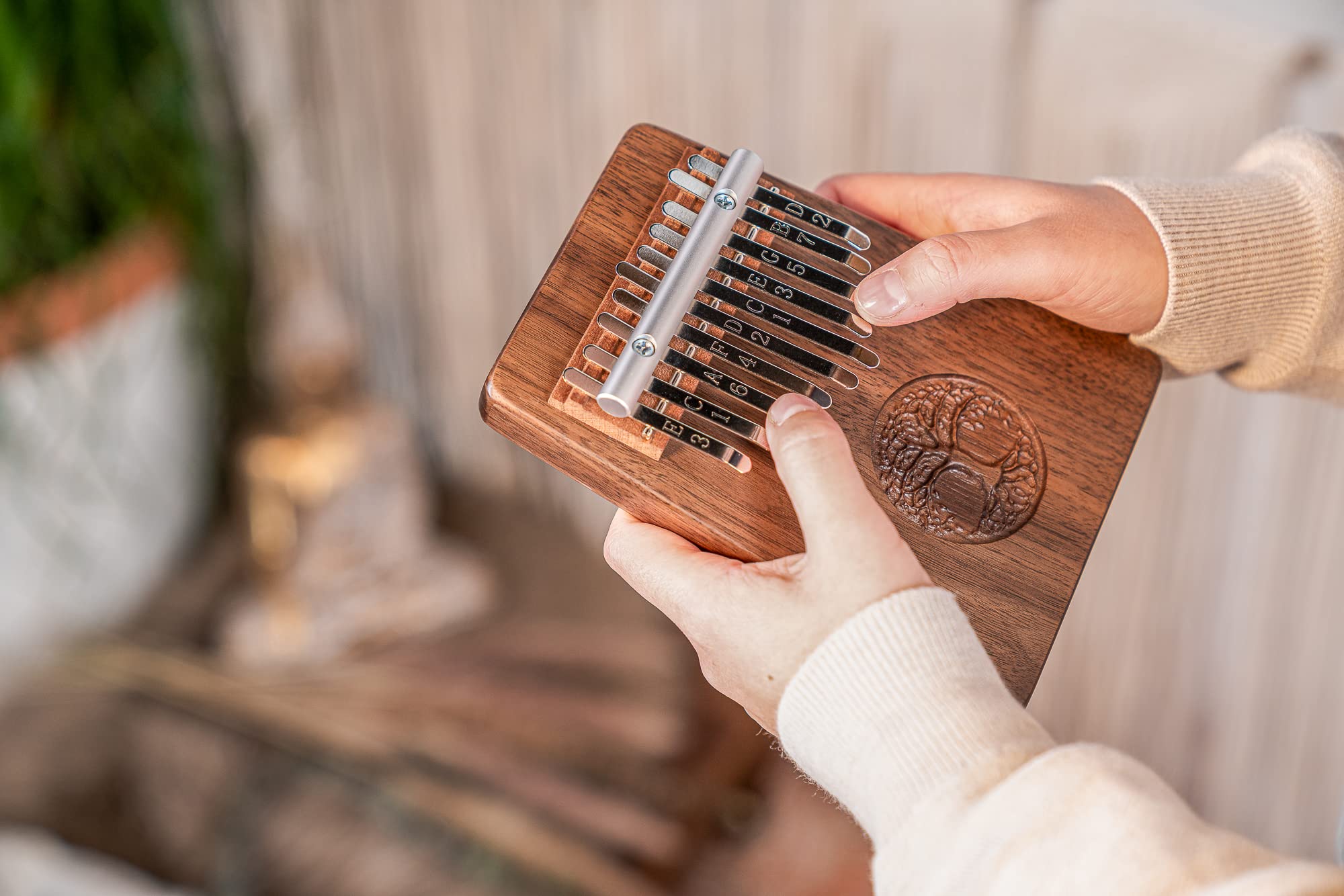Home>Instruments>Piano>How To Play Gm On Piano


Piano
How To Play Gm On Piano
Published: February 11, 2024
Learn how to play Gm on piano with our step-by-step guide. Master the piano chords and impress your audience with your musical skills.
(Many of the links in this article redirect to a specific reviewed product. Your purchase of these products through affiliate links helps to generate commission for AudioLover.com, at no extra cost. Learn more)
Table of Contents
Introduction
Welcome to the fascinating world of piano playing, where the harmonious blend of melody and rhythm creates timeless musical masterpieces. If you’re eager to expand your repertoire and delve into the captivating realm of the Gm chord, you’re in for a rewarding journey. Mastering the Gm chord on the piano opens up a myriad of musical possibilities, allowing you to infuse your playing with depth, emotion, and complexity.
Whether you’re a novice pianist or a seasoned player looking to add new dimensions to your music, understanding how to play the Gm chord is a valuable skill. The Gm chord, short for G minor, is a versatile and evocative chord that can evoke a range of emotions, from melancholy and introspection to mystery and sophistication.
In this comprehensive guide, we’ll explore the fundamentals of playing the Gm chord on the piano, from understanding its structure and fingering to incorporating it into various chord progressions and musical styles. By the end of this journey, you’ll have the knowledge and techniques to confidently integrate the Gm chord into your piano repertoire, elevating your playing to new heights.
Understanding the Basics
Before delving into the intricacies of playing the Gm chord on the piano, it’s essential to grasp the fundamental building blocks of music theory and piano technique. Familiarizing yourself with these basics will provide a solid foundation for mastering the Gm chord and expanding your musical proficiency.
First and foremost, let’s explore the concept of chords. In music theory, a chord is a harmonic combination of three or more notes played simultaneously. Chords form the backbone of music, providing harmony and structure to melodies. Understanding how chords are constructed and how they function within a piece of music is pivotal to becoming a proficient pianist.
Next, it’s crucial to understand the structure of the Gm chord. The Gm chord is comprised of three notes: G, Bb, and D. In its most basic form, the Gm chord is played by simultaneously pressing these three keys on the piano. The Gm chord possesses a distinct tonality that sets it apart from major chords, evoking a sense of depth and introspection.
Furthermore, mastering proper finger positioning and hand placement is essential for playing the Gm chord with ease and fluidity. As with any piano technique, developing dexterity and coordination in your fingers is crucial for executing chords and melodies seamlessly. Paying attention to proper posture and hand positioning will enhance your overall playing technique and prevent strain or discomfort during extended practice sessions.
Lastly, familiarize yourself with the layout of the piano keyboard and the corresponding notes for the Gm chord. Understanding the physical layout of the keys and their musical relationships will facilitate your journey in playing the Gm chord and navigating the piano with confidence.
By gaining a solid grasp of these foundational elements, you’ll be well-equipped to progress to the next stage of mastering the Gm chord on the piano.
Getting Familiar with the Gm Chord
As you embark on your journey to master the Gm chord on the piano, it’s essential to become intimately familiar with the intricacies of this evocative and versatile chord. Understanding the construction, sound, and emotional resonance of the Gm chord will empower you to infuse your playing with depth and expression.
First and foremost, let’s delve into the composition of the Gm chord. The Gm chord consists of three essential notes: G, Bb, and D. When played together, these notes create a rich and resonant sound that embodies the melancholic and introspective qualities characteristic of the minor chord family. Take the time to play each note individually and then together as a chord, allowing yourself to appreciate the unique tonal quality of the Gm chord.
Next, familiarize yourself with different voicings of the Gm chord across the piano keyboard. Experiment with playing the Gm chord in various inversions and positions, exploring the different timbres and textures that each voicing produces. This exploration will not only deepen your understanding of the Gm chord but also enhance your ability to incorporate it creatively into your musical arrangements.
Furthermore, take note of the emotional resonance of the Gm chord. Unlike its major counterpart, the Gm chord exudes a sense of melancholy, introspection, and even mystery. As you play and listen to the Gm chord, allow yourself to connect with the emotions it evokes, and consider how you can harness its expressive power in your musical interpretations.
Finally, practice transitioning to and from the Gm chord from neighboring chords. Smooth transitions between chords are essential for fluid and expressive piano playing. Whether you’re moving from a C major chord to Gm or exploring more complex chord progressions, honing your ability to seamlessly integrate the Gm chord into your playing will greatly enhance your musical fluency.
By immersing yourself in the intricacies of the Gm chord, you’ll lay a solid foundation for incorporating its emotive and evocative qualities into your piano repertoire.
Learning Gm Chord Progressions
Understanding chord progressions is a pivotal aspect of mastering the Gm chord on the piano. Chord progressions form the harmonic framework of music, guiding the listener through a sequence of chords that create movement and emotion. By delving into Gm chord progressions, you’ll expand your musical vocabulary and unlock the potential for creating captivating musical compositions.
Begin by familiarizing yourself with common chord progressions that feature the Gm chord. One popular progression is the Gm – Dm – Am – Gm sequence, which exudes a sense of poignant introspection. Practice transitioning smoothly between these chords, paying attention to the emotional impact of each progression.
Experiment with variations of the Gm chord within progressions. For example, incorporating the Gm7 chord (G, Bb, D, F) can add a jazzy and sophisticated flair to your progressions. By exploring different chord voicings and extensions, you’ll infuse your playing with depth and complexity.
Furthermore, consider the role of the Gm chord within minor key progressions. In the key of Bb minor, for instance, the Gm chord serves as the subdominant, adding a layer of tension and resolution within the overall harmonic structure. Understanding the function of the Gm chord within different keys will expand your compositional versatility.
As you delve into Gm chord progressions, pay attention to the rhythmic patterns and dynamics within your playing. Experiment with arpeggiated patterns, broken chords, and rhythmic variations to imbue your progressions with nuance and expression. The interplay of rhythm and harmony will elevate your interpretations of Gm chord progressions.
Lastly, explore how the Gm chord interacts with other chords to create evocative and compelling musical narratives. Whether you’re crafting a soulful ballad or an introspective instrumental piece, the Gm chord can serve as a cornerstone for emotive and resonant progressions.
By immersing yourself in Gm chord progressions, you’ll expand your musical palette and develop a nuanced understanding of harmonic movement, paving the way for expressive and captivating piano performances.
Playing Gm in Different Styles
Exploring the versatility of the Gm chord across various musical styles is a captivating journey that allows pianists to showcase their adaptability and creativity. From classical to jazz, pop to blues, incorporating the Gm chord in different styles opens up a world of expressive possibilities and musical exploration.
In classical music, the Gm chord can evoke a sense of drama and melancholy, adding depth to compositions and interpretations. Whether you’re interpreting a Baroque piece by Bach or a Romantic composition by Chopin, the Gm chord can be utilized to convey emotional richness and complexity within classical piano repertoire.
Transitioning to jazz, the Gm chord takes on a sultry and sophisticated persona. In jazz standards and improvisational contexts, the Gm7 chord is a staple, infusing compositions with a smoky allure and harmonic intrigue. Experiment with incorporating the Gm chord into jazz progressions and improvisations, embracing its evocative qualities within the jazz idiom.
For those venturing into pop and contemporary music, the Gm chord offers a palette of emotive possibilities. From crafting heartfelt ballads to driving pop anthems, the Gm chord can underpin melodies with a sense of yearning and introspection. Embrace the versatility of the Gm chord in pop arrangements, exploring its potential to convey raw emotion and musical depth.
In the realm of blues, the Gm chord contributes to the soulful and expressive nature of the genre. Whether you’re delving into traditional blues progressions or crafting your own blues-inspired compositions, the Gm chord can infuse your playing with a sense of longing and authenticity, capturing the essence of the blues tradition.
As you explore playing the Gm chord in different styles, consider the unique characteristics and nuances of each genre, and how the Gm chord can be harnessed to convey specific emotions and moods within those musical contexts. Embracing the diverse stylistic applications of the Gm chord will expand your musical horizons and enrich your piano playing with depth and versatility.
Tips for Mastering Gm on Piano
Mastering the Gm chord on the piano requires dedication, practice, and a nuanced understanding of its musical potential. Here are valuable tips to enhance your proficiency in playing the Gm chord and integrating it seamlessly into your piano repertoire:
- Practice Fingering and Hand Placement: Devote focused practice sessions to refine your finger positioning and hand placement when playing the Gm chord. Ensuring that each note is articulated clearly and resonates harmoniously is essential for mastering the chord’s expressive qualities.
- Explore Inversions and Voicings: Experiment with different inversions and voicings of the Gm chord across the piano keyboard. This exploration will expand your harmonic palette and provide diverse tonal options when incorporating the Gm chord into your playing.
- Immerse Yourself in Gm Progressions: Dedicate time to learning and internalizing Gm chord progressions in various musical keys and contexts. Understanding the chord’s role within progressions will deepen your musical fluency and compositional prowess.
- Embrace Dynamic and Articulative Variation: Explore the expressive potential of the Gm chord by incorporating dynamic variations and articulative nuances in your playing. Experiment with subtle crescendos, decrescendos, and varied touch to imbue the chord with emotional depth.
- Listen and Analyze Gm in Diverse Repertoire: Expand your musical horizons by listening to diverse musical genres and analyzing how the Gm chord is utilized in different contexts. Drawing inspiration from varied repertoire will inform your interpretation and utilization of the Gm chord.
- Collaborate and Jam with Other Musicians: Engage in collaborative musical experiences to explore the interplay of the Gm chord within ensemble settings. Jamming with other musicians will foster improvisational skills and expand your understanding of the chord’s versatility.
- Cultivate Emotional Connection: Develop a deep emotional connection with the Gm chord, allowing its melancholic and introspective qualities to resonate within your playing. Connecting on an emotional level will infuse your interpretations with authenticity and depth.
- Seek Guidance from a Knowledgeable Instructor: Consider seeking guidance from a seasoned piano instructor who can provide personalized feedback and guidance on mastering the Gm chord. A knowledgeable mentor can offer valuable insights and tailored exercises to enhance your proficiency.
By incorporating these tips into your practice regimen and musical explorations, you’ll elevate your mastery of the Gm chord on the piano, unlocking its expressive potential and enriching your musical journey.











